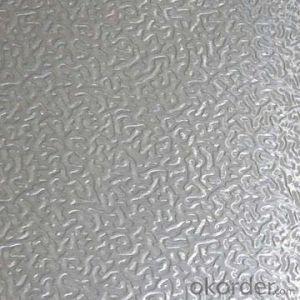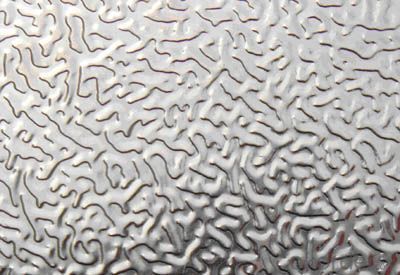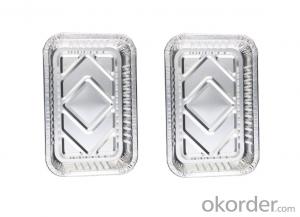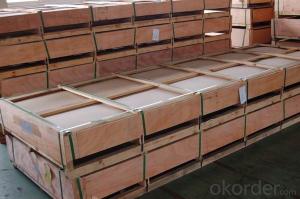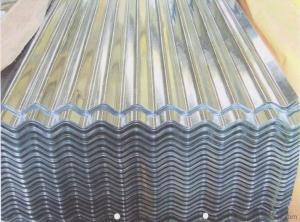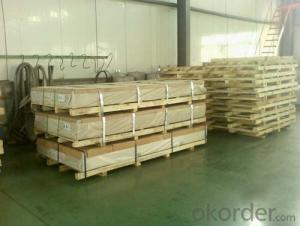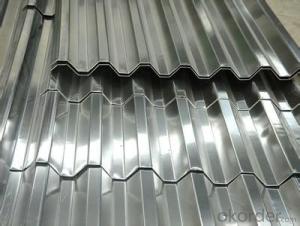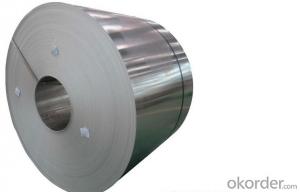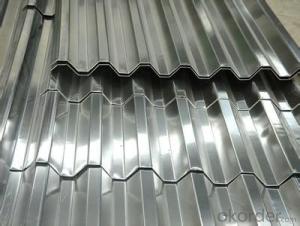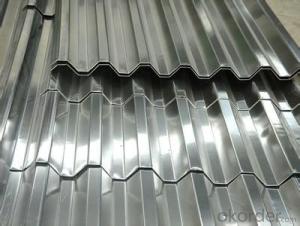Aluminum Sheets for Windows - Corrugated Aluminum Sheet Use
- Loading Port:
- China Main Port
- Payment Terms:
- TT OR LC
- Min Order Qty:
- -
- Supply Capability:
- -
OKorder Service Pledge
OKorder Financial Service
You Might Also Like
Aluminium foil acts as a total barrier to light and oxygen (which cause fats to oxidise or become rancid), odours and flavours, moistness, and germs, it is used broadly in food and pharmaceutical packaging. The purpose of aluminium is to make long-life packs (aseptic processing|aseptic packaging) for drinks and dairy goods, which allows storing without refrigeration. Aluminium foil containers and trays are used to bake pies and to pack takeaway meals, ready snacks and long life pet foods.
Aluminium foil is widely sold into the consumer market, often in rolls of 500 mm (20 in) width and several metres in length.It is used for wrapping food in order to preserve it, for example, when storing leftover food in a refrigerator (where it serves the additional purpose of preventing odour exchange), when taking sandwiches on a journey, or when selling some kinds of take-away or fast food. Tex-Mex restaurants in the United States, for example, typically provide take-away burritos wrapped in aluminium foil.
Aluminium foils thicker than 25 μm (1 mil) are impermeable to oxygen and water. Foils thinner than this become slightly permeable due to minute pinholes caused by the production process.
Aluminium foil has a shiny side and a matte side. The shiny side is produced when the aluminium is rolled during the final pass. It is difficult to produce rollers with a gap fine enough to cope with the foil gauge, therefore, for the final pass, two sheets are rolled at the same time, doubling the thickness of the gauge at entry to the rollers. When the sheets are later separated, the inside surface is dull, and the outside surface is shiny. This difference in the finish has led to the perception that favouring a side has an effect when cooking. While many believe that the different properties keep heat out when wrapped with the shiny finish facing out, and keep heat in with the shiny finish facing inwards, the actual difference is imperceptible without instrumentation.The reflectivity of bright aluminium foil is 88% while dull embossed foil is about 80%.
We provide a full range of precision aluminum strip for almost any application. We produce aluminum strip in a wide variety of alloys, including clad composites. Our aluminum strip can be produced in standard dimensions or custom made to your special requirements. We produce both imperial and metric units. We manufacture in compliance with the main international specifications, and tighter tolerances or custom tempers are available upon request. We offer various surface conditions, custom finishes (painting, anodizing, embossing), special processing, and multiple packaging options to meet our customer's unique requirements. The following is a summary of our capabilities.
Manufactured in compliance with the main international specifications and standards, including: Aluminum Association, ASTM, EN, and DIN.
We can also manufacture in compliance with other international standards including:ASME, SAE, AMS, AWS, FED, MIL, QQ, ISO, BS, AFNOR, JIS and GOST.
Manufactured in compliance with the main international specifications and standards.
Tighter tolerances are available upon request.
Aluminium (or aluminum; see spelling differences) is a chemical element in the boron group with symbol Al and atomic number 13. It is a silvery white, soft, ductile metal. Aluminium is the third most abundant element (after oxygen and silicon), and the most abundant metal in the Earth's crust. It makes up about 8% by weight of the Earth's solid surface. Aluminium metal is so chemically reactive that native specimens are rare and limited to extreme reducing environments. Instead, it is found combined in over 270 different minerals.The chief ore of aluminium is bauxite.
Aluminium is remarkable for the metal's low density and for its ability to resist corrosion due to the phenomenon of passivation. Structural components made from aluminium and its alloys are vital to the aerospace industry and are important in other areas of transportation and structural materials. The most useful compounds of aluminium, at least on a weight basis, are the oxides and sulfates.
Despite its prevalence in the environment, no known form of life uses aluminium salts metabolically. In keeping with its pervasiveness, aluminium is well tolerated by plants and animals. Owing to their prevalence, potential beneficial (or otherwise) biological roles of aluminium compounds are of continuing interest.
The earliest citation given in the Oxford English Dictionary for any word used as a name for this element is alumium, which British chemist and inventor Humphry Davy employed in 1808 for the metal he was trying to isolate electrolytically from the mineral alumina. The citation is from the journal Philosophical Transactions of the Royal Society of London: "Had I been so fortunate as to have obtained more certain evidences on this subject, and to have procured the metallic substances I was in search of, I should have proposed for them the names of silicium, alumium, zirconium, and glucium."
Davy settled on aluminum by the time he published his 1812 book Chemical Philosophy: "This substance appears to contain a peculiar metal, but as yet Aluminum has not been obtained in a perfectly free state, though alloys of it with other metalline substances have been procured sufficiently distinct to indicate the probable nature of alumina."[69] But the same year, an anonymous contributor to the Quarterly Review, a British political-literary journal, in a review of Davy's book, objected to aluminum and proposed the name aluminium, "for so we shall take the liberty of writing the word, in preference to aluminum, which has a less classical sound."
The -ium suffix conformed to the precedent set in other newly discovered elements of the time: potassium, sodium, magnesium, calcium, and strontium (all of which Davy isolated himself). Nevertheless, -um spellings for elements were not unknown at the time, as for example platinum, known to Europeans since the 16th century, molybdenum, discovered in 1778, and tantalum, discovered in 1802. The -um suffix is consistent with the universal spelling alumina for the oxide (as opposed to aluminia), as lanthana is the oxide of lanthanum, and magnesia, ceria, and thoria are the oxides of magnesium, cerium, and thorium respectively.
The aluminum spelling is used in the Webster's Dictionary of 1828. In his advertising handbill for his new electrolytic method of producing the metal in 1892, Charles Martin Hall used the -um spelling, despite his constant use of the -ium spelling in all the patents[58] he filed between 1886 and 1903. It has consequently been suggested[by whom?] that the spelling reflects an easier-to-pronounce word with one fewer syllable, or that the spelling on the flyer was a mistake.[citation needed] Hall's domination of production of the metal ensured that aluminum became the standard English spelling in North America.
- Q: Are aluminum sheets resistant to rust?
- Yes, aluminum sheets are highly resistant to rust. This is because aluminum naturally forms a protective oxide layer on its surface when exposed to air, which prevents further corrosion. Unlike iron or steel, which can rust when exposed to moisture and oxygen, aluminum does not require any additional coatings or treatments to protect it from rusting. This makes aluminum sheets a popular choice for a wide range of applications, including construction, automotive, and marine industries, where resistance to rust is essential.
- Q: Can the aluminum sheets be used for manufacturing kitchen countertops?
- Certainly! Kitchen countertops can indeed be manufactured using aluminum sheets. Aluminum proves to be a versatile and durable material, displaying resistance against both corrosion and heat. Its lightweight nature and easy workability make it an ideal choice for crafting custom countertops in a variety of sizes and shapes. Moreover, aluminum countertops boast a contemporary and sleek appearance, while also being effortlessly cleanable and maintainable. Nevertheless, it is noteworthy that aluminum is comparatively softer when compared to other commonly utilized countertop materials like granite or quartz. Consequently, aluminum countertops may be more susceptible to scratches and dents. However, with proper care and maintenance, aluminum sheets can serve as a feasible alternative for producing kitchen countertops.
- Q: Are there any specific storage requirements for 101 aluminum sheets?
- Specific storage requirements exist for 101 aluminum sheets. To prevent moisture absorption and corrosion, aluminum sheets must be stored in a clean and dry area. Furthermore, a well-ventilated space is necessary to prevent the accumulation of potentially harmful gases. Proper stacking, with sufficient support and spacing, is crucial to prevent bending or deformation. Moreover, to avoid discoloration or fading, it is essential to shield the sheets from direct sunlight. A recommended practice is covering them with a suitable material, such as a plastic sheet or tarp, to offer an additional layer of protection. Ensuring appropriate storage conditions will uphold the quality and integrity of the aluminum sheets for their intended purpose.
- Q: Is it possible to use aluminum sheets in environments with low temperatures?
- <p>Yes, aluminum sheets can be used in cold climates. Aluminum has excellent corrosion resistance and maintains its strength in low temperatures, making it suitable for use in cold environments. It does not rust or corrode easily, which is beneficial in harsh weather conditions. However, it's important to consider thermal expansion and contraction, as aluminum expands and contracts more than some other materials. Proper installation and design considerations are necessary to account for these properties in cold climates.</p>
- Q: What does 3003-O aluminum mean?
- H-- strain hardening statusO-- annealed state (the softest of all States)T-- heat treatment status
- Q: Can aluminum sheets be used for sound insulation?
- Aluminum sheets possess a certain degree of effectiveness in sound insulation. Although aluminum is not as proficient in soundproofing as materials such as rubber or foam, it can still offer a certain level of sound insulation if utilized appropriately. One can employ aluminum sheets as a barrier or partition in walls, ceilings, floors, or other surfaces to decrease the transmission of sound waves. Nevertheless, it is noteworthy to mention that attaining optimal outcomes might require the inclusion of supplementary soundproofing materials or techniques.
- Q: Which kind of glue is best for bonding wood and aluminum sheet together?
- cm2, leather. 4, it’s durable and can endure 106 degree high temperature. Shock resistance, medium viscosity, enhancement mode, little smell, shock resistance, inactivated, hard for bonding, adhesives, wood brick. 480, little white sediment, bonding, acidity, 410。 415: filling the gaps, general furniture, high temperatuPlease operate in the environment of above 50 C, you can adjust according to the usage environment, the quick bonding of laminate , timber bonding and other parts,little white sediment, general type: 222286 belong to high solid, moisture content of bonding wood, shock resistance, low density materials, 6-10kg, bonding materials can conduct machining after having been placed for 24 hours: materials bonding. 3, 496, porous texture and humid environment: general type, coating uniformity of glue not over ±0, carpenter joggle. 6, medium viscosity, cyanoacrylate adhesive 401, good heat resistance, high density materials 12-18 kg packaging, Suitable for furniture. 414 (1) Formica, carpenter’s glue,
- Q: Are aluminum sheets suitable for automotive heat shields?
- Yes, aluminum sheets are suitable for automotive heat shields. They have excellent thermal conductivity and high melting point, making them effective in dissipating heat and protecting sensitive components from excessive temperature. Additionally, aluminum is lightweight and corrosion-resistant, which are desirable qualities for automotive applications.
- Q: Does it make any difference shiny side up, shiny side down when it comes to cooking with aluminum foil?
- The shiny side is slightly better reflector of heat. Face that side of the foil in the appropriate direction. To keep things cold, put the shiny side on the outside -- that will reflect incoming heat. To keep things warm, face the shiny side inward toward the hot food -- to reflect the heat that is trying to escape back into the food. Note that people often bake potatoes with the shiny side out -- that is because it makes for a better (prettier) presentation. In reality, baking them that way reflects the incoming heat on the outside, slightly slowing the cooking process. Of course, in reality, which side of the foil faces where makes little difference. It does make for lively conversation, though.
- Q: Can aluminum sheets be used for elevator interiors?
- Indeed, elevator interiors can certainly be constructed using aluminum sheets. Aluminum has gained significant popularity as a material of choice for elevator interiors due to its multitude of advantageous qualities. Its lightweight nature, durability, and resistance to corrosion render it highly suitable for long-term utilization in elevator applications. With ease, aluminum sheets can be skillfully fabricated and shaped to perfectly fit the dimensions and design specifications of elevator interiors. Furthermore, aluminum can be enhanced with various types of coatings or finishes, such as anodizing or powder coating, to not only augment its aesthetic appeal but also provide additional protection. Overall, aluminum sheets represent a practical and widely utilized option for elevator interiors within the industry.
Send your message to us
Aluminum Sheets for Windows - Corrugated Aluminum Sheet Use
- Loading Port:
- China Main Port
- Payment Terms:
- TT OR LC
- Min Order Qty:
- -
- Supply Capability:
- -
OKorder Service Pledge
OKorder Financial Service
Similar products
Hot products
Hot Searches
Related keywords


